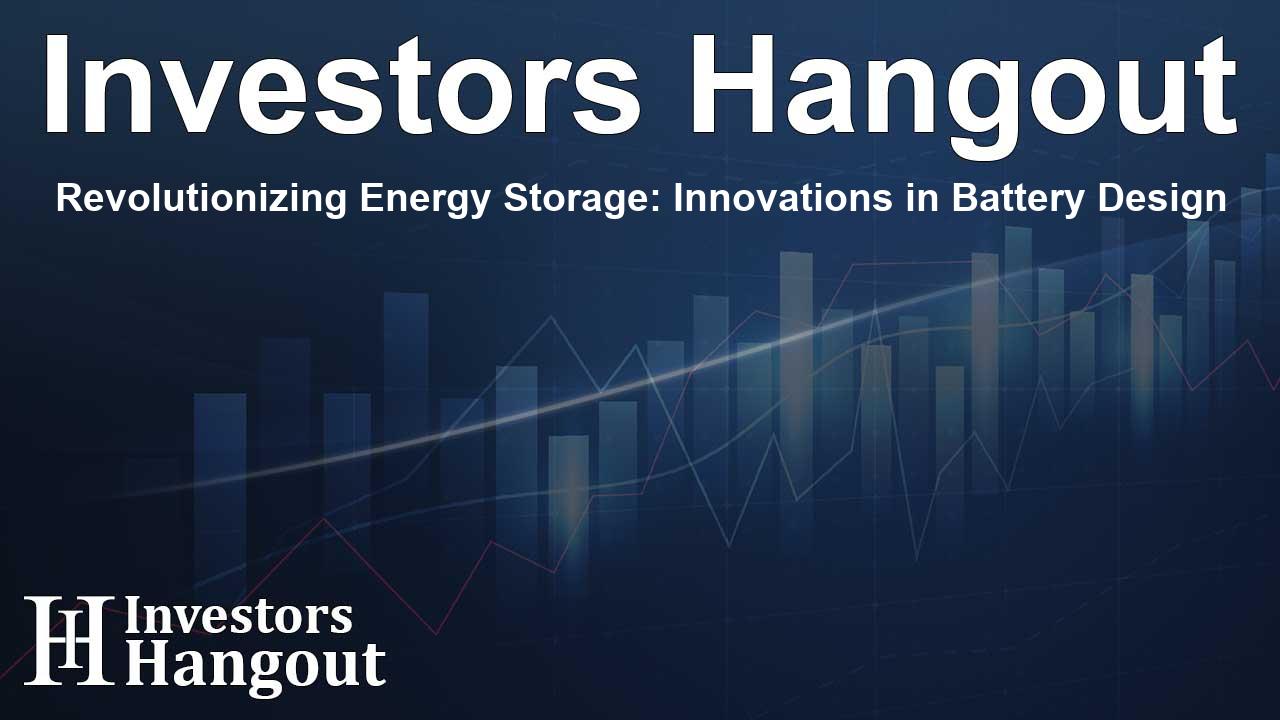Revolutionizing Energy Storage: Innovations in Battery Design

Innovative Research in Energy Storage Technologies
Researchers have made significant strides in developing a graphene coating that enhances the performance of zinc-ion batteries for grid applications. As the world increasingly turns toward sustainable energy sources like solar, wind, and nuclear, the need for reliable energy storage systems has never been more critical.
Challenges with Traditional Lithium-Ion Batteries
While lithium-ion batteries have been widely used, they come with notable safety concerns, including risks of fire and thermal runaway. Addressing these issues, zinc-ion batteries are emerging as a safer, more environmentally friendly alternative. They utilize water-based electrolytes, which significantly reduce the potential for hazardous incidents.
The Advantages of Zinc-Ion Batteries
Zinc-ion batteries are not only safer, but they also offer lower costs and high abundance of materials. With low toxicity levels, they present a more sustainable option for energy storage. Despite these benefits, current collectors like graphite foil can hinder the scalability of these batteries due to their inadequate mechanical properties.
Breakthroughs from Dongguk University
A team led by Associate Professor Geon-Hyoung An at Dongguk University has unveiled an innovative approach to current collectors by using graphene-coated stainless steel foil, referred to as G@SSF-400. This new collector showcases ease of production through a straightforward graphene coating process combined with heat treatment to enhance performance.
According to Professor An, "The core innovation of this study revolves around using graphene-coated stainless-steel foil as a current collector for zinc-ion batteries. This new material not only allows for simple manufacturing but also demonstrates exceptional electrochemical performance, crucial for industry scalability." This innovative technique addresses the challenges presented by conventional methods, such as susceptibility to corrosion and poor conductivity, leading to stable battery operation under high-mass loading conditions.
Performance Indicators of the New Battery Design
The performance of this new battery technology is impressive, with specific capacities reported to exceed 1 mAh cm-2 and maintaining 88.7% capacity after 1,500 cycles, indicating excellent durability and longevity. Furthermore, as roll-to-roll manufacturing can be implemented, large-scale production becomes feasible, moving zinc-ion batteries nearer to commercial viability across energy storage sectors.
A Sustainable Path for Energy Storage
Professor An states, "This technology is particularly suited for grid-scale energy storage, especially with the integration of renewable energies. Our approach enables the use of non-flammable, cost-effective, and eco-friendly water-based zinc-ion batteries as a viable substitute for conventional lithium-ion systems."
This groundbreaking research provides solutions to pressing challenges in energy storage: safety, cost, and scalability. A pivotal step towards achieving a circulating battery economy, it assists in minimizing reliance on costly or potentially dangerous materials often found in lithium-ion technologies.
Conclusion and Future Implications
The next-generation technology proposed by the Dongguk University team positions high-performance zinc-ion batteries as a promising candidate for safe and scalable energy storage solutions. If widely adopted, these batteries could enhance energy equity and support the transition toward a sustainable future while contributing to action against climate change.
Frequently Asked Questions
What is the main innovation in the zinc-ion batteries developed by Dongguk University?
The key innovation is the use of graphene-coated stainless steel foil as a current collector, improving performance and scalability.
Why are zinc-ion batteries considered a safer alternative to lithium-ion batteries?
Zinc-ion batteries utilize water-based electrolytes, which significantly lower the risks of fire and thermal runaway that are associated with lithium-ion batteries.
What are the notable performance metrics of the new zinc-ion batteries?
The new batteries exhibit specific capacities exceeding 1 mAh cm-2 and maintain 88.7% of their capacity after 1,500 cycles, indicating impressive durability.
How does the manufacturing process of these zinc-ion batteries support scalability?
The roll-to-roll manufacturing capability allows for large-scale production, making it feasible to commercialize these batteries.
What impact could this research have on renewable energy integration?
This research could significantly enhance energy storage solutions, promoting sustainable energy systems and facilitating the transition to greener energy sources.
About The Author
Contact Dylan Bailey privately here. Or send an email with ATTN: Dylan Bailey as the subject to contact@investorshangout.com.
About Investors Hangout
Investors Hangout is a leading online stock forum for financial discussion and learning, offering a wide range of free tools and resources. It draws in traders of all levels, who exchange market knowledge, investigate trading tactics, and keep an eye on industry developments in real time. Featuring financial articles, stock message boards, quotes, charts, company profiles, and live news updates. Through cooperative learning and a wealth of informational resources, it helps users from novices creating their first portfolios to experts honing their techniques. Join Investors Hangout today: https://investorshangout.com/
The content of this article is based on factual, publicly available information and does not represent legal, financial, or investment advice. Investors Hangout does not offer financial advice, and the author is not a licensed financial advisor. Consult a qualified advisor before making any financial or investment decisions based on this article. This article should not be considered advice to purchase, sell, or hold any securities or other investments. If any of the material provided here is inaccurate, please contact us for corrections.
